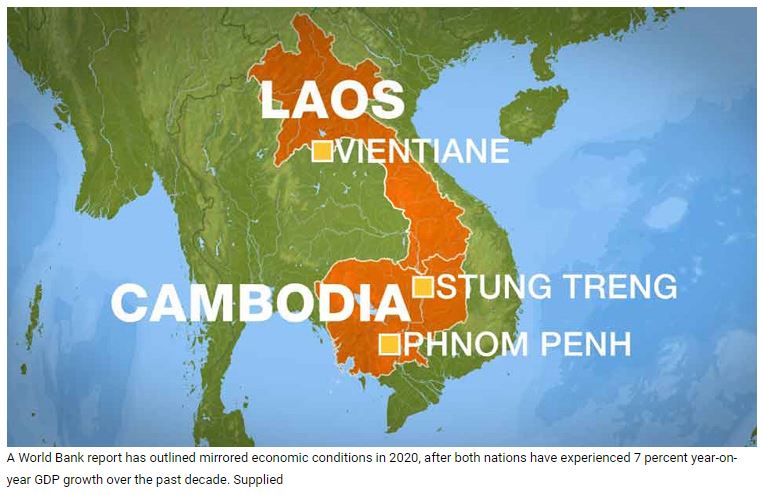Laos: A case study for Cambodian policymakers
Recent reports in Laos of price surges for essential foods and medicines, rising unemploymentand ballooning national debt, are proving to be a case study for local policymakers to avoid as the COVID-19 economic fallout worsens.
Comparisons between the neighbouring countries are clear after a recent World Bank report outlined mirrored economic conditions this year, after both nations enjoyed a 7 percent year-on-year GDP growth over the past decade.
The report details that similar to Cambodia, while Laos has avoided a COVID-19 health crisis, the disruption to supply chains has caused a devastating collapse to the country’s economic pillars: tourism, services and remittance from overseas workers.
Estimates from the World Bank says that Lao’s GDP is predicted to contract by -1.8 percent this year because of a sharp drop in the performance of the travel, tourism and hospitality sectors.
With a population of only seven million, these sectors account for 11 percent of total employment and 22 percent of employment in urban areas.
The report added, that since the outbreak more than 100,000 migrant workers have returned to Laos, resulting in an estimated reduction of up to $125million in remittances affecting recipient household incomes – particularly in rural areas.
In response, both countries have turned to their vitally important agriculture sectors to keep the population fed and its citizens employed.
Although despite estimates of almost 70 percent of Laotians now working in the agricultural sector, subsistence farming is still the norm and traditional production methods do not produce enough to meet market demand.
“Employing much of our workforce, agriculture is critical for our nation,” said Vice-Minister of Agriculture and Forestry for Lao PDR Dr Phouang Parisak Pravongviengkham.
“Laos has prioritised green growth in its long-term agriculture and forestry development strategy and it focuses on agricultural quality, safe food and products by having small and medium enterprises as the main engine,” he added.
That said, without doubt, the biggest difference between Cambodia’s and Lao’s current economic situation is the country’s long-standing high fiscal deficit as well as low reserve buffers.
Debt has been a major concern for Lao’s one-party government after signing up to large concessional loans from China to build hydroelectric dams and other infrastructure projects partially funded under China’s Belt and Road Initiative.
As of last year the debt that Laos owes China amounts to about 45 percent of the nation’s GDP, which is at around $20 billion a year ($2,600 per person). The figures represent the highest percentage among nations included in a 2019 analysis by an Australian research group.
“Laos was already at high risk of what analysts called “debt distress” before the Coronavirus pandemic, but COVID-19 has only raised the risks of its foreign borrowing,” they said.
“The country has accumulated significant external debt over the past decade in relation to major new hydroelectric projects, as well as Belt and Road infrastructure projects,” they added.
To assist the Lao’s government the World Bank has given a raft of policy options to mitigate the impacts of the COVID-19 pandemic, stating the nation needs immediate economic relief while supporting recovery and fostering resilience in the medium- and long-terms.
Given the limited fiscal space, it is important to reprioritise spending and mobilise additional resources to support well-targeted social assistance to affected households and businesses, they said.
Accelerating revenue administration reforms would be essential to build the fiscal space for the government to mitigate shocks. Engaging in the restructuring of external debt could help alleviate some of the pressure on the debt service in the medium term.
In the longer term, accelerating reforms to promote diversification and improve competitiveness in the private sector, supported by improved connectivity, will be important to strengthen economic and social resilience, they added.
Industry insiders hope that the cause and solutions to Lao’s current economic situation are heeded by Cambodia, as local policy maker’s deal with the economic fallout of the COVID-19 pandemic.
Source: https://www.khmertimeskh.com/50735869/laos-a-case-study-for-cambodian-policymakers/


 English
English




